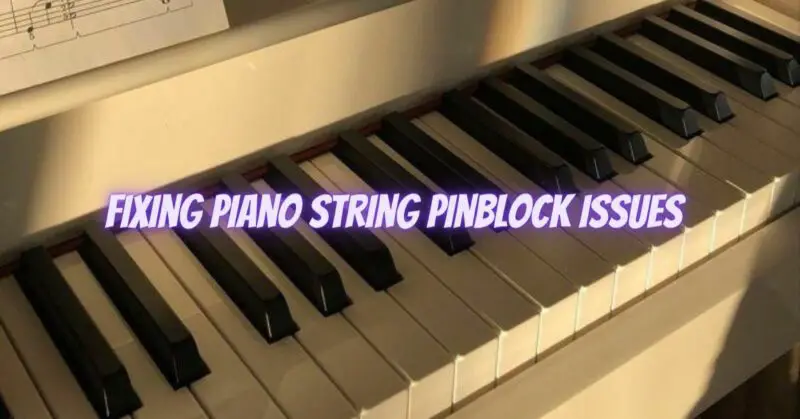The pinblock is a crucial component of a piano that plays a significant role in maintaining the tension and stability of the strings. It is a laminated wooden block located at the front of the piano’s soundboard, and the tuning pins are driven into it to hold the strings in place. Over time, the pinblock can develop issues, leading to tuning instability and a lack of precise pitch. In this article, we will explore common pinblock problems and how to fix them.
- Pinblock Deterioration:
One of the most common issues with the pinblock is its deterioration due to age, humidity changes, or improper maintenance. As the wood dries out or becomes brittle, the tuning pins lose their grip, resulting in strings that won’t hold tune.
Solution: If the pinblock’s deterioration is minor, it may be possible to apply a pinblock treatment to improve the grip. However, in more severe cases, replacement of the pinblock might be necessary. This is a complex task that requires the expertise of a qualified piano technician.
- Loose Tuning Pins:
Tuning pins can become loose over time, especially if the piano has been exposed to temperature and humidity fluctuations. Loose tuning pins will cause the strings to slip out of tune frequently.
Solution: To address loose tuning pins, a technician can use a special tool called a pinblock reamer. This tool tightens the pin holes, allowing the tuning pins to hold the strings firmly. Reaming is a delicate process that should only be performed by experienced professionals.
- Cracked Pinblock:
Cracks in the pinblock can occur due to structural stress or changes in humidity. Cracked pinblocks affect the stability of the tuning pins and can lead to significant tuning issues.
Solution: Repairing a cracked pinblock is a complicated procedure that involves stabilizing the wood and filling the cracks with a specialized pinblock filler. Again, this is a task that should be undertaken by a skilled piano technician.
- Inadequate Pinblock Treatment:
If a piano undergoes pinblock treatment using low-quality products or methods, it can lead to ineffective results, with tuning problems recurring soon after the treatment.
Solution: Ensure that any pinblock treatment is performed by a reputable technician using high-quality materials. Regular maintenance and periodic pinblock treatments can extend the life of the pinblock and improve tuning stability.
- Environmental Factors:
Humidity fluctuations in the piano’s environment can cause the wood in the pinblock to expand and contract, affecting the tuning pins’ grip and stability.
Solution: Maintain a stable environment for your piano with controlled humidity levels to minimize the impact on the pinblock. Using a piano dehumidifier or humidifier can help maintain consistent humidity levels.
In conclusion, a well-functioning pinblock is essential for maintaining the tuning stability and overall performance of a piano. If you suspect any pinblock issues, it is best to consult a professional piano technician for a thorough evaluation and appropriate repairs. Regular maintenance and proper care can help prevent pinblock problems and ensure your piano continues to produce beautiful music for years to come.


